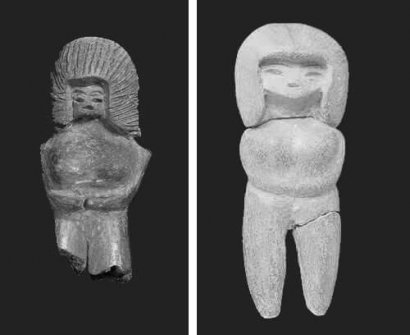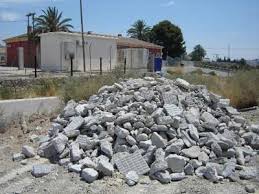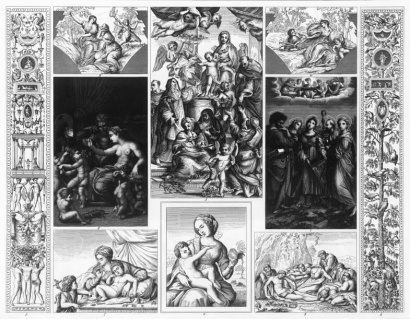 During the Paleolithic period, different human communities made statuettes, which could be made of stone, wood or ivory. These sculptures represented naked women and in the world of archeology they are known as Venus.
During the Paleolithic period, different human communities made statuettes, which could be made of stone, wood or ivory. These sculptures represented naked women and in the world of archeology they are known as Venus.
On the western coast of the current territory of Ecuador, a pre-Columbian culture, the Valdivians, developed approximately 5000 years ago. They engaged in fishing, hunting and agricultural activities. This culture is known for its ceramic techniques and especially for its stone and later clay sculptures. The Venus of Valdivia is the most emblematic sculpture.
Regarding its sculptural characteristics, the following stand out:
1) the woman is represented normally naked and in different vital stages (puberty, pregnancy or maturity),
2) the statues appear with ornaments (for example, shells used as necklaces and decorative elements on the lips),
3) most of these figurines feature flashy and very elaborate hairstyles (the raised hairstyle is believed to be a symbol of power),
4) the woman's arms stand out for their size and
5) The figures express the sexual dimension of the woman (voluminous chest, wide hips and visible genitalia).
Archaeological interpretation
Archaeologists coincide in affirming that the woman of the Valdivian culture had a dominant role in the whole of society and in that sense one could speak of a matriarchal society. On the other hand, the statuettes communicate that women were valued because they symbolized the idea of fertility.
It should be noted that the majority of Venus have been found in burial places and this circumstance makes women relate to the fertility of the Earth. According to other interpretations, the Valdivian statuettes could be offerings to the gods or a talisman used by shamans in healing rituals.
Regardless of the possible interpretations, archaeologists agree on a thesis: the Valdivians were the first pottery culture in America.
The venus of the paleolithic
Since the end of the 19th century, female statuettes have been appearing in different territories of the planet; in France, Italy, Ukraine, Austria or Russia. The Venus of Brassempouy and that of Willendorf are the two most significant.
These prehistoric sculptures continue to arouse the interest of archaeologists, as it is impossible to determine with absolute certainty what they were intended to represent. The most accepted thesis is the idea of fertility associated with women.









